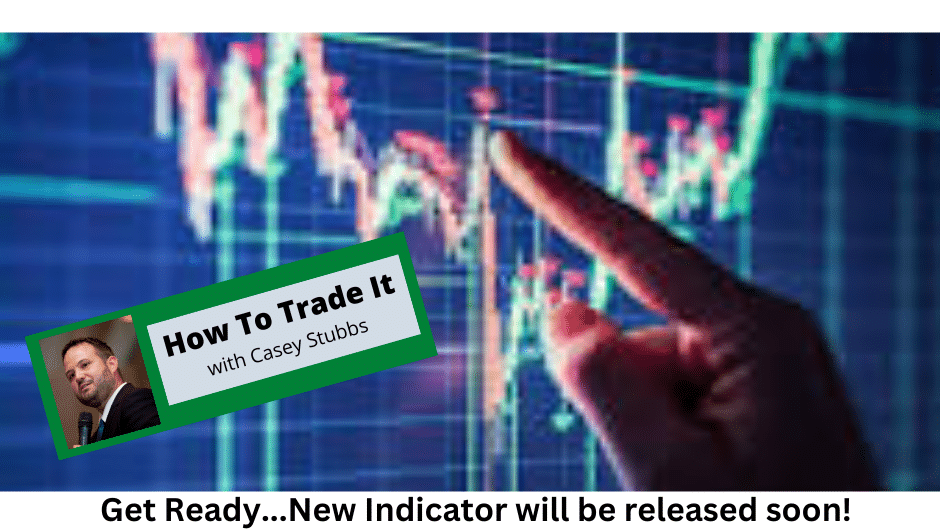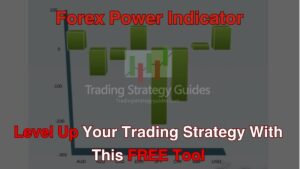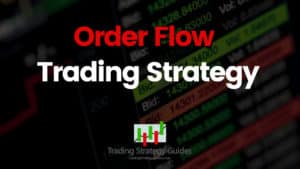Cracking the Code: Casey Stubbs Reveals the Game-Changing New Indicator

In this episode of the How to Trade It Podcast, host Casey Stubbs begins by expressing his excitement about a new indicator he’s releasing soon. He also reflects on receiving harsh feedback on his recently published book, “The Complete Trading System,” and shows surprise and openness to criticism.
In this episode, Casey talks about…
- harsh feedback on his book
- his decision not to cover certain topics in the book and the defense of his approach
- his soon-to-be-released new indicator and the story of Mani, a contributor who returned after a ten-year hiatus and developed this impressive indicator
You don’t want to miss it!
Subscribe to How To Trade It
Casey refers to the previous podcast episode where he discussed the upcoming release of his book and shares the first book review from Brett, who gave it a one-star rating, criticizing it for being basic and lacking depth on certain topics. Casey responds to Brett’s review, acknowledging the expected criticism and expressing gratitude for the feedback to improve as a teacher and trader.
While recognizing that not everyone will be pleased with the book, Casey hopes it will inspire and motivate readers. He clarifies his decision not to extensively focus on divergences and Fibonacci, defending his approach to sharing his system and experiences.
Casey expresses disappointment that his personal story didn’t resonate with Brett, but reiterates its importance in motivating others. After concluding the book review discussion and expressing his willingness to learn and grow from feedback, Casey transitions to discussing his new indicator.
He explains why he hasn’t released a new indicator for quite a while, acknowledging the negative impact of strategy hopping on traders. Casey introduces the new indicator and mentions upcoming webinars to discuss it in detail.
This episode also features the story of Mani, a past contributor who disappeared for ten years, but recently returned to write content again for Casey’s website. Casey describes how Mani started writing again and contributed significantly to his new newsletter, the Swing Trading Report.
He highlights the challenges faced by Mani, who lives in Iran and regularly encounters internet restrictions, while continuing to work for Casey. Mani’s recent development of an indicator that predicts future price movements. Initially expressing skepticism, Casey later became impressed with the indicator’s performance.
Future Price Movement
Predicting future price movement in financial markets is a challenging endeavor. It involves analyzing a wide range of factors, such as market trends, economic indicators, company performance, and geopolitical events, to forecast the direction and magnitude of price changes.
Traders and analysts employ various methodologies and tools, including technical analysis, fundamental analysis, and quantitative models, to make predictions about future price movements. While these approaches can provide insights and increase the probability of making accurate predictions, it is important to acknowledge the inherent uncertainty and volatility of the markets.
Future price movement is influenced by a multitude of unpredictable factors, including unexpected news events, market sentiment shifts, and investor behavior. Therefore, it is crucial for traders to combine their predictive models with risk management strategies, maintaining a cautious approach and being prepared for unforeseen market fluctuations.
Ultimately, understanding that predicting future price movement is a complex and dynamic process helps traders navigate the uncertainties of the market and make informed trading decisions.
New Indicator…what to look for!
When evaluating indicators for trading purposes, there are several key factors to consider. Here are some things to look for in an indicator:
- Accuracy and Reliability: The indicator should provide accurate and reliable signals or insights about the market. It should have a track record of producing consistent results and aligning with actual price movements. Backtesting and analyzing historical data can help assess the indicator’s accuracy.
- Relevance to Trading Strategy: The indicator should be aligned with your trading strategy and goals. It should complement your trading style and provide information that is useful for your specific approach. Consider whether the indicator provides insights into trend direction, entry/exit points, or risk management.
- Simplicity and User-Friendliness: A good indicator should be easy to understand and use. It should present information in a clear and concise manner, allowing traders to interpret signals and make decisions efficiently. Avoid overly complex indicators that may lead to confusion or misinterpretation.
- Customizability: Look for indicators that allow customization to fit your trading preferences. The ability to adjust parameters, timeframes, or other settings can help tailor the indicator to your specific needs and improve its effectiveness.
- Compatibility and Integration: Consider whether the indicator is compatible with your trading platform or software. Seamless integration with your existing tools can enhance your trading workflow and make it easier to incorporate the indicator into your analysis.
- Support and Community: Check if there is a supportive community or resources available for the indicator. Active forums, tutorials, or educational materials can assist in understanding and effectively utilizing the indicator. Additionally, ongoing support and updates from the indicator’s developer can be valuable.
Remember that indicators should be used as tools to aid decision-making rather than relying solely on them for trading decisions. It’s important to combine indicators with other forms of analysis and exercise caution in interpreting their signals.
Subscribe to How To Trade It
Resources & People Mentioned
- The Complete Trading System: How to Develop a Mindset, Maximize Profitability, and Own Your Market Success
- Previous podcast episode about Casey’s new book
- Swing Trading Newsletter
- New Indicator Waiting List
Connect With Casey Stubbs
- Website: https://tradingstrategyguides.com/
- Website: https://caseystubbs.com
- Website: https://globalproptrader.com/
- YouTube: https://www.youtube.com/TradingStrategyGuides
- YouTube: https://www.youtube.com/caseystubbs
- Twitter: https://www.twitter.com/caseystubbs
- Facebook: https://www.facebook.com/TradingStrategyGuides
- LinkedIn: https://www.linkedin.com/in/caseystubbs/
Disclaimer: Trading carries a high level of risk, and may not be suitable for all investors. Before deciding to invest you should carefully consider your investment objectives, level of experience, and risk appetite. The possibility exists that you could sustain a loss of some or all of your initial investment. Therefore, you should not invest money that you cannot afford to lose. You should be aware of all the risks associated with foreign exchange trading, and seek advice from an independent financial advisor if you have any doubts.







